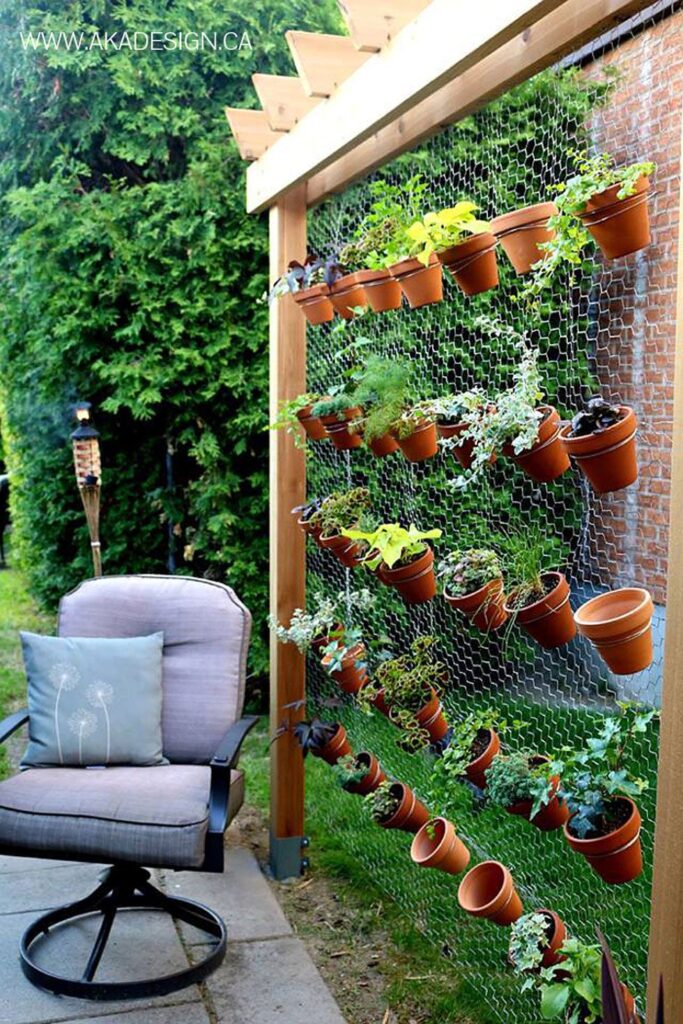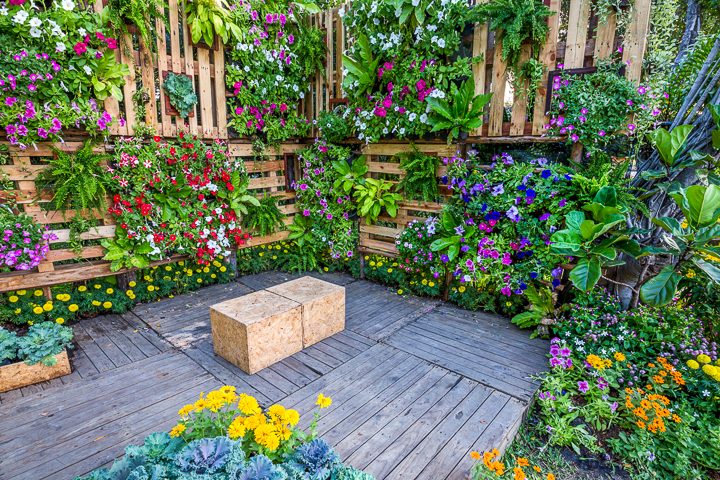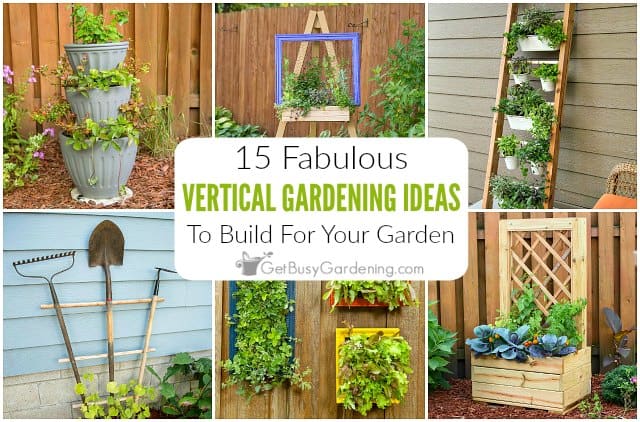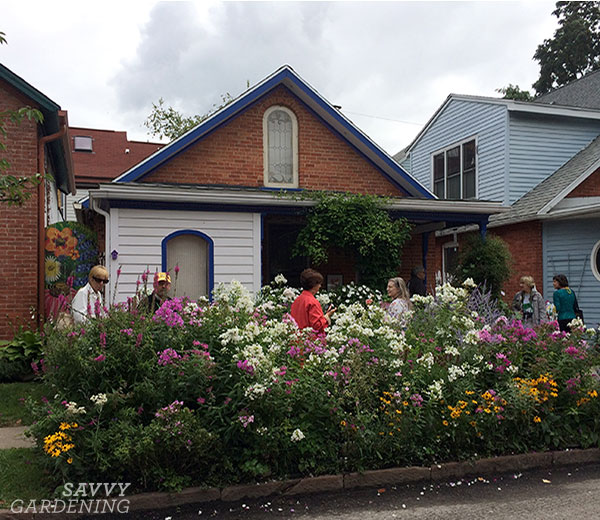Creating a stunning vertical garden is easier than you think! In this article, you will discover all the steps and tips you need to transform any blank wall or small space into a vibrant oasis of greenery. From selecting the perfect plants to maximizing limited space, you will learn how to create a beautiful vertical garden that will bring life and beauty to any environment. Get ready to unleash your creativity and make your own vertical garden dreams come true.

This image is property of hips.hearstapps.com.
Choosing the Right Location
When creating a vertical garden, one of the first decisions you need to make is choosing the right location. The success of your garden depends on it, as different plants have varying sunlight requirements. So, it’s essential to consider the available sunlight before starting your project.
Evaluate the space you have for your vertical garden. Look for a wall or any other vertical structure that receives ample sunlight throughout the day. A south-facing wall is usually the best choice, as it receives the most sunlight. However, if your available space is limited or doesn’t receive enough sunlight, you may need to consider alternative options like using artificial grow lights or selecting shade-tolerant plants.
Assess the structural support of the chosen location. A vertical garden adds weight to the wall or structure it is attached to, so it’s crucial to ensure that it can withstand the additional load. Consult with a professional if needed, to guarantee the safety and stability of your vertical garden.
Selecting the Best Plants
Choosing the right plants is another crucial step in creating a beautiful vertical garden. Before you decide on specific plant species, determine the growing conditions of your chosen location.
Consider factors such as the amount of sunlight, temperature, and humidity in your area. Some plants thrive in full sun, while others prefer partial shade. Take note of these conditions to ensure you select plants that will flourish in your vertical garden.
To create a visually appealing vertical garden, choose a variety of plants. Consider plants with different sizes, shapes, and textures. This diversity will add depth and visual interest to your garden. Combine trailing plants, such as ivy or creeping thyme, with upright plants like ferns or flowers for a stunning effect.
In addition to aesthetics, consider the maintenance requirements of the plants you choose. Some plants may require frequent watering or pruning, while others are more low-maintenance. Select plants that fit your lifestyle and the amount of time you can dedicate to your vertical garden’s upkeep.

This image is property of static.onecms.io.
Building the Vertical Structure
Now that you have determined the perfect location and selected the ideal plants, it’s time to build the vertical structure for your garden. There are various types of structures you can choose from, depending on your preferences and the available space.
You may opt for a trellis system, where plants can climb and grow vertically along a lattice or grid structure. Another option is a modular system, consisting of individual planters that can be stacked or arranged to create a custom design. Additionally, living walls or green walls can be created using a system of panels that hold the plants and provide support.
Prepare the wall or framework where you will install the vertical garden. Ensure that it is clean and stable. Remove any loose paint, dirt, or debris that may hinder the installation process. If necessary, repair any cracks or damages to the wall before proceeding.
Installing a watering system is essential to maintain the health and vitality of your vertical garden. Depending on the chosen structure, you can install a drip irrigation system, a misting system, or even a simple hose attachment. Ensure that the watering system reaches all areas of the vertical garden, providing adequate hydration to the plants.
Preparing the Soil
Before planting your vertical garden, it’s crucial to prepare the soil properly. Start by removing any existing vegetation, including weeds or grass. This will eliminate competition for nutrients and minimize the risk of pests or diseases.
Amend the soil with organic matter to ensure it is fertile and provides essential nutrients to the plants. Compost, well-rotted manure, or worm castings are excellent options to enrich the soil. Mix these organic materials thoroughly into the existing soil, creating a nutrient-rich growing medium for your plants.
Ensure proper drainage by amending the soil composition if necessary. Most plants prefer well-draining soil to avoid waterlogging and root rot. If your soil retains water excessively, consider adding materials like sand, perlite, or peat moss to improve drainage and prevent water accumulation.

This image is property of www.gardenersoasis.com.
Planting the Vertical Garden
Now that your vertical garden’s structure and soil are ready, it’s time to start planting. Begin by arranging the plants before planting them to ensure a balanced and visually appealing arrangement.
Consider the growth habits and heights of the plants to decide their positioning. Place cascading or trailing plants near the top to create a beautiful waterfall effect. Upright plants can be strategically placed to add structure and vertical interest.
Dig holes or create pockets for each plant, ensuring they have sufficient space to grow and develop their root systems. Gently place the plants into their designated spots, ensuring that the roots are well-covered with soil. Press the soil gently around the plants to secure them in place.
Water the newly planted vertical garden thoroughly to settle the soil and provide essential hydration to the plants. Ensure that water reaches all plants evenly and that there are no dry spots.
Watering and Maintaining the Garden
Proper watering and maintenance are vital to the success of your vertical garden. Establish a watering schedule that meets the needs of the selected plant species and the prevailing weather conditions. Monitor the moisture level regularly and adjust the watering frequency accordingly.
In addition to watering, monitor your garden for pests and diseases. Inspect the plants regularly for signs of infestation or damage. Early detection can help you address the issue promptly and prevent the spread to other plants. Use environmentally-friendly pest control methods whenever possible.
Prune and trim the plants periodically to maintain their shape, health, and promote growth. Remove dead or damaged leaves, flowers, or stems to encourage new growth. Additionally, trim trailing plants to prevent overgrowth and maintain the desired shape of your vertical garden.

This image is property of k2j4u5m5.stackpathcdn.com.
Fertilizing the Vertical Garden
To ensure your vertical garden maintains optimal health and productivity, it’s important to provide it with the necessary nutrients. Choose a suitable fertilizer based on the specific requirements of your selected plant species.
Apply the fertilizer according to the instructions provided, taking care not to overapply. Using too much fertilizer can be detrimental to the plants and may result in nutrient imbalances or burning of the foliage.
Monitor the plants’ nutrient needs and adjust your fertilization schedule accordingly. Some plants may require more frequent or higher doses of fertilizer, while others may have more modest requirements. Regularly check the appearance and growth of your plants as indications of their nutrient levels.
Protecting the Vertical Garden
To keep your vertical garden looking beautiful and thriving, it’s important to protect it from extreme weather conditions. Strong winds, heavy rain, or extreme temperatures can damage the plants or destabilize the structure.
Consider creating a shelter or windbreak for your vertical garden, especially if it is located in an exposed area. This can be done by installing a barrier or using plant covers during severe weather events.
Regularly check for signs of damage or instability in the structure of your vertical garden. Ensure that it is securely attached to the wall or framework. If you notice any issues, promptly repair or reinforce the structure to avoid any potential collapse.
Take preventive measures against pests by using appropriate barriers or organic pest control methods. Monitor your garden for any signs of pest activity and take immediate action to prevent infestations.

This image is property of hips.hearstapps.com.
Troubleshooting Common Issues
Even with the best care and maintenance, issues may arise in your vertical garden. It’s essential to be able to identify and address common problems promptly.
Water-related problems, such as overwatering or underwatering, can be detrimental to your plants. Ensure that you maintain a proper watering schedule and monitor the moisture levels regularly. Adjust the watering frequency as needed to avoid these issues.
Nutrient deficiencies can affect the health and growth of your plants. Monitor the appearance of your plants for any signs of yellowing or stunted growth, which may indicate a lack of essential nutrients. Address these deficiencies by adjusting your fertilization schedule or using a balanced fertilizer.
Prevent overcrowding and competition among plants by maintaining appropriate spacing. Crowded plants can limit air circulation, increase the risk of disease, and hinder overall growth. Regularly thin out your vertical garden by removing any excessive growth or overcrowded areas.
Enhancing the Aesthetics
To create a truly beautiful vertical garden, consider enhancing its aesthetics by incorporating various design elements.
Include colorful and contrasting plants to add visual interest and vibrancy to your garden. Choose plants with different flower colors, leaf textures, and foliage shades to create a captivating and diverse display. Remember to consider the overall color scheme of your garden and select plants that complement each other.
Incorporate decorative elements into your vertical garden to add charm and personality. Hanging planters, decorative ornaments, or even small sculptures can create focal points and enhance the overall appeal. Be creative and experiment with different elements to achieve your desired aesthetic.
Consider the garden’s overall design when selecting plants and arranging them. Think about the visual balance, focal points, and the desired atmosphere you want to create. Whether you prefer a minimalistic, modern look or a lush, tropical paradise, choose plants and design elements that align with your vision.
Creating a beautiful vertical garden requires careful planning, thoughtful plant selection, and proper maintenance. By following these steps and putting in a little effort, you can transform any vertical space into a stunning oasis that will be the envy of all who see it. So, roll up your sleeves and get started on your beautiful vertical garden today!






